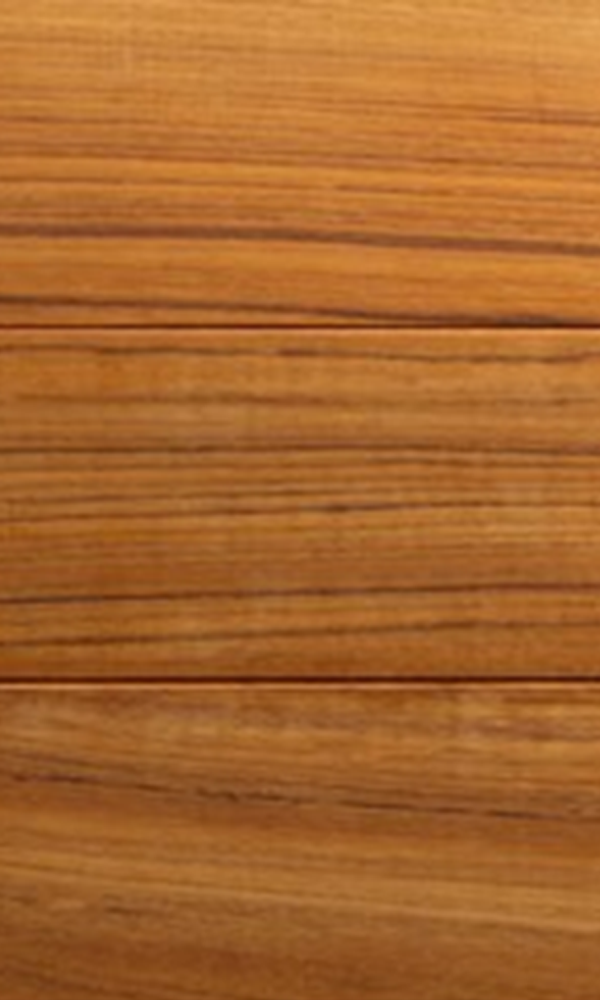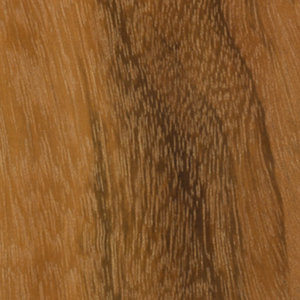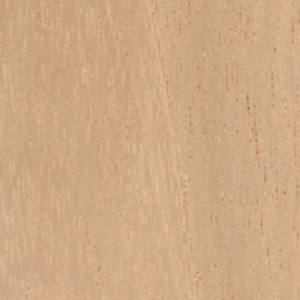| Color/Appearance |
Heartwood tends to be a golden or medium brown, with color darkening with age.
|
| Grain/Texture |
Grain is straight, though it can occasionally be wavy or interlocked. Coarse, uneven texture and moderate to low natural luster. Raw, unfinished wood surfaces have a slightly oily or greasy feel due to natural oils.
|
| Rot Resistance |
Teak has been considered by many to be the gold standard for decay resistance, and its heartwood is rated as very durable. Teak is also resistant to termites, though it is only moderately resistant to marine borers and powder post beetles.
|
| Workability |
Easy to work in nearly all regards, with the only caveat being that teak contains a high level of silica (up to 1.4%) which has a pronounced blunting effect on cutting edges. Despite its natural oils, teak usually glues and finishes well, though in some instances it may be necessary to wipe the surface of the wood with a solvent prior to gluing/finishing to reduce the natural oils on the surface of the wood.
|
| Odor |
Teak can have a leather-like scent when freshly milled.
|
| Allergies/Toxicity |
Although severe reactions are quite uncommon, teak has been reported as a sensitizer. Usually most common reactions simply include eye, skin, and respiratory irritation, as well as other health effects, such as pink eye, rash, nausea, asthma-like symptoms, and vision effects
|
| Pricing/Availability |
Despite its widespread cultivation on plantations worldwide, teak is very expensive. It is perhaps one of the most expensive lumbers on the market, at least for large-sized, non-figured wood. Other woods are more expensive, but are typically only available in small pieces, (i.e., Gaboon ebony or snakewood), or they are valued solely for the figure of their grain (i.e., burl woods, Pommele sapele, or Waterfall bubinga).
|
| Sustainability |
This wood species is not listed in the CITES Appendices or on the IUCN Red List of Threatened Species. However, because of a recent (Feb. 2021) military takeover of the country of Myanmar (the biggest source of teak worldwide), sanctions have been placed on imported teak.
|
| Common Uses |
Ship and boatbuilding, veneer, furniture, exterior construction, carving, turnings, and other small wood objects.
|





Reviews
There are no reviews yet.